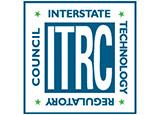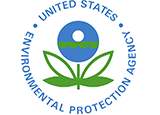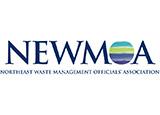Waste Site Remediation
Requirements and guidance for waste site investigations, management and remediation of PFAS contamination.
Hundreds of waste sites in New Hampshire have sampled for and detected PFAS in groundwater, with the majority of those sites detecting PFAS at levels that are greater than applicable regulatory standards. These releases of PFAS to the environment are assessed, managed and cleaned up by the parties responsible for the contamination. Review of the work completed by the responsible parties and their consultants for compliance with applicable rules and regulations is managed by staff in various NHDES Waste Management Division bureaus, typically the Hazardous Waste Remediation Bureau (HWRB):
- States Sites Program – State sites include hazardous waste sites, brownfields sites, landfills and lined wastewater lagoons.
- Federal Sites Program – Federal sites include superfund and Department of Defense sites.
NHDES has prepared guidance for responsible parties and consultants to support their work. NHDES has also summarized the statewide occurrence of PFAS at New Hampshire’s waste sites.
Screening Requirements for Waste Sites
NHDES has required waste sites with the potential for PFAS contamination to sample for PFAS in groundwater since 2016, pursuant to the provisions of the New Hampshire Code of Administrative Rules, Chapters Env-Or 600 and Env-Or 700. NHDES clarified which sites need to complete an initial screening for PFAS in October 2017. The purpose of the initial sampling was to determine whether any drinking water sources may be at risk associated with releases from the site.
The types of sites required to sample for PFAS include, but are not limited to:
- Sites subject to Groundwater Release Detection Permits.
- Landfills (lined, unlined, active and/or closed) that are subject to groundwater monitoring requirements.
- Active hazardous waste sites and sites undergoing environmental site assessment reviewed by the HWRB where either:
- Site history indicates that releases at a site are associated with activities that use or used PFAS containing products, and/or
- Sites where Class B firefighting foam [e.g., aqueous film forming foam (AFFF)] may have been used or released.
For the initial screening, representative sampling should be performed to assess whether PFAS are present at the site at concentrations that exceed AGQS and whether receptors (e.g., drinking water supply wells) are impacted. The number of samples collected will depend on the site.
Initial sample locations should be selected based on the professional judgement of the Professional Engineer and/or Geologist directing the sampling effort in consideration of previous and current uses of the site, site hydrogeology, proximity to sensitive receptors, and other known releases. Sampling locations to be included in this initial screening effort should include, at a minimum:
- At least one monitoring well from each source area.
- Representative downgradient monitoring well(s) [e.g., at the extent of a site Groundwater Management Zone (GMZ), if established].
- Active drinking water supply well(s) included in the current Groundwater Management Permit (GMP) schedule and active drinking water supply wells with previous detections of other site contaminants of concern.
- Further, consider including at least one hydraulically upgradient (background) monitoring location, based on site conditions and surrounding property uses.
Sites that are found to have PFAS releases are subsequently managed through the NHDES HWRB. The need for future assessment and/or investigation will be evaluated following NHDES’ review of the PFAS data collected, similar to the approach taken for other contaminants of concern at a site. Site-specific considerations will be given to the concentrations, types and distribution of PFAS, the site remedial status, the potential for temporal changes and the proximity to sensitive receptors.
Information about sites that screen for PFAS can be accessed in several ways. The geographical location of these waste sites can be viewed on NHDES’ PFAS Sampling Dashboard, and site investigation information for each site can be viewed on NHDES OneStop. Semi-annually, NHDES summarizes which waste sites have detected PFAS in an Occurrence Report submitted to the legislature.
Sampling Guidance
NHDES has prepared sample collection guidance for special handling and care that must be taken due to the potential presence of PFAS in common consumer products and in equipment typically used to collect environmental samples.
For specific questions not addressed in these guidance materials, please contact the NHDES project manager for your site, or the HWRB Emerging Contaminants program.
Analytical Methods Guidance
Laboratory analytical and testing guidance for waste sites has been prepared by NHDES. These testing guidelines may be different than those provided for the analysis of drinking water samples.
For specific questions not addressed in these guidance materials, please contact the NHDES project manager for your site, or the HWRB Emerging Contaminants program.
Reporting PFAS Data to NHDES
NHDES requests that all analytical results for PFAS be uploaded to the NHDES Environmental Monitoring Database (EMD). Storage of PFAS analytical data in EMD allows NHDES to use GIS in a state-wide assessment of the data. The purpose of this document is to provide supplemental guidance to clarify and streamline the upload process for PFAS data. Additional guidance on uploading data to EMD is available after logging into the One Stop Data Provider page. Additional guidance has been prepared to supplement the EMD guidance specific to PFAS uploads to address Frequently Asked Questions for PFAS Uploads. Data uploaded to EMD is available for viewing on the NHDES PFAS Sampling Map.
Consistent with requirements for other contaminants of concern, reports required to be submitted to NHDES pursuant to Env-Or 600 and Env-Or 700 (e.g., site investigations, remedial action plans, groundwater management permit applications, groundwater quality summary reports) should be submitted electronically as PDFs to NHDES via OneStop. These reports are available for viewing on NHDES OneStop.
Contaminated Sites Management Process
The investigation, management and remediation of PFAS contamination at waste sites is completed by responsible parties pursuant to Env-Or 600 and Env-Or 700. NHDES provides guidance and reviews the work by responsible parties for compliance with applicable rules and regulations. More information about general contaminated sites management, including application forms for Groundwater Management Permits, can be found on the NHDES Hazardous Waste Remediation webpage.
Regulatory Values for PFAS in Soil and Water
Site investigation, remediation and monitoring of contaminated media (groundwater, surface water, soil and air) are performed in accordance with applicable NHDES’ Contaminated Sites Management rules, Env-Or 600 and NHDES Groundwater Release Detection Rules Env-Or 700. Concentrations of PFAS in various media may be compared to the statewide values in the sources described below.
Learn More About Contaminated Sites Management in New Hampshire
Groundwater
Concentrations of PFAS in groundwater are compared to the Ambient Groundwater Quality Standards (AGQS), established in Table 600-1 of the NH Contaminated Sites Management Rule (Env-Or 600).
Soil
Concentrations of PFAS in soil are currently compared to the direct contact risk-based screening levels, dated October 6, 2023, developed for those PFAS that have an AGQS.
NHDES has initiated the rulemaking process to establish Soil Remediation Standards (SRS) for certain PFAS by proposing revisions to the NH Code of Administrative Rules Chapter Env-Or 600 Contaminated Site Management. NHDES prepared a Technical Summary Report for the Proposed SRS for Perfluorooctanoic Acid (PFOA), Perfluorooctane Sulfonic Acid (PFOS), Perfluorohexane Sulfonic Acid (PFHxS), and Perfluoronanonoic Acid (PFNA) dated October 6, 2023, to summarize the derivation of the proposed values, which includes an evaluation of the soil-to-groundwater (i.e., leaching) pathway. The technical summary report refers to studies completed on behalf of NHDES, including:
- An evaluation of PFAS occurrence in shallow soil and PFAS leaching in New Hampshire soils and biosolids with the U.S. Geological Survey (USGS), documented in:
- “Statewide survey of shallow soil concentrations of per- and polyfluoroalkyl substances (PFAS) and related chemical and physical data across New Hampshire, 2021” prepared by the USGS and dated October 19, 2022.
- “Solid/Water Partitioning of Per- and Polyfluoroalkyl Substances (PFAS) in New Hampshire Soils and Biosolids: Results from Laboratory Experiments at the U.S. Geological Survey” prepared by the USGS and dated February 9, 2023.
- An evaluation of modeling approaches to assess PFAS leaching from soil to groundwater, documented in “Development of Leaching-Based Soil Values for Select Per- and Polyfluoroalkyl Substances (PFAS)” prepared by Sanborn, Head & Associates for NHDES and dated September 29, 2023.
Soil exported from waste sites that contain PFAS may be considered a solid waste subject to the provisions of the New Hampshire Solid Waste Rules in Env-Sw 903.03 Management of Contaminated Soils.
Surface Water
Currently, Env-Wq 1700 does not contain standards for PFAS in surface water. Some sites have calculated site-specific guidance values. For more information about the status of PFAS surface water standards development in New Hampshire, please see the Surface Water Quality webpage.
Other Media
Some sites have evaluated other media, such as fish, which have resulted in site-specific screening guidance. See the statewide fish consumption guidance.
If you are in need of accommodation with any of these files, please contact des.webwaste@des.nh.gov.
PFAS 101 – Tools, Guidance and Resources
The science about PFAS investigations, management and remediation continues to evolve. The following tools and guidance may help consultants in furthering their understanding of PFAS sources, occurrence, fate and transport, and approaches to remediation:
ITRC Technical and Regulatory Guidance Document and Trainings
USEPA Contaminated Site Cleanup Information (Clu-In)
USEPA PFAS
USDOD’s Environmental Research Programs SERDP and ESTCP
Northeast Waste Management Officials' Association (NEWMOA) Trainings and Webinars
Association of State and Territorial Solid Waste Management Officials, Inc. (ASTSWMO) PFAS







